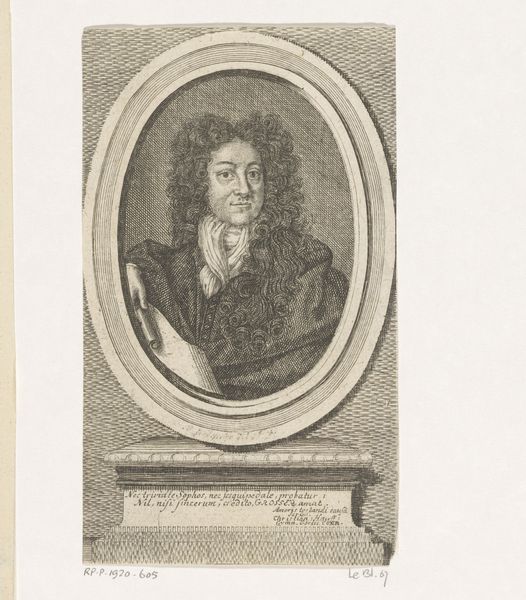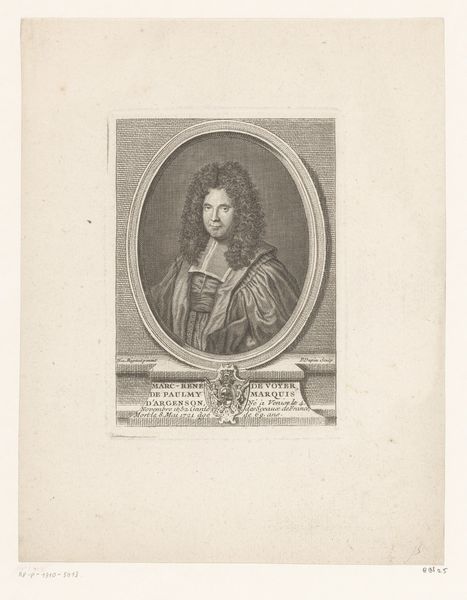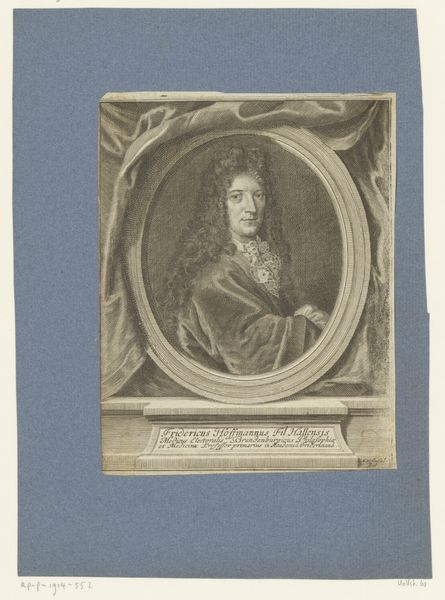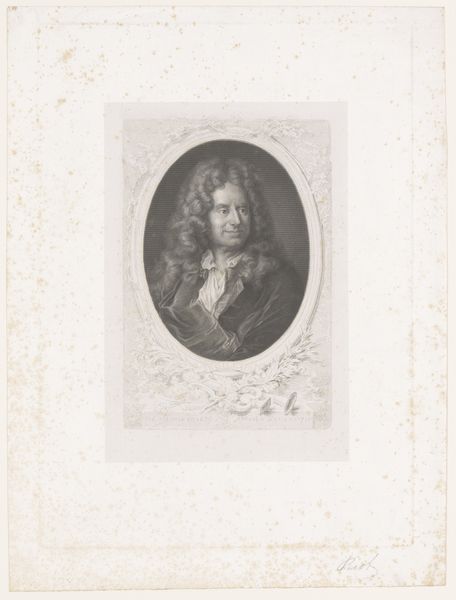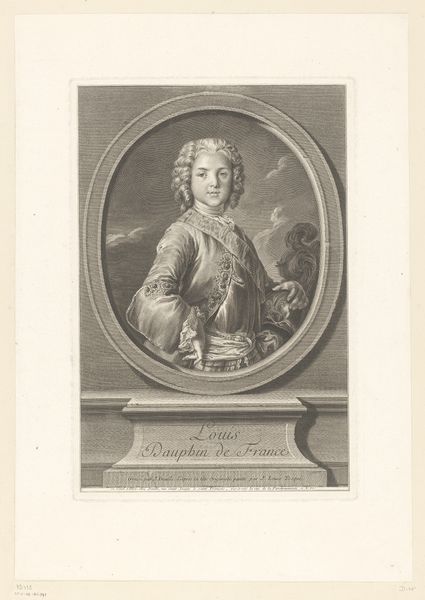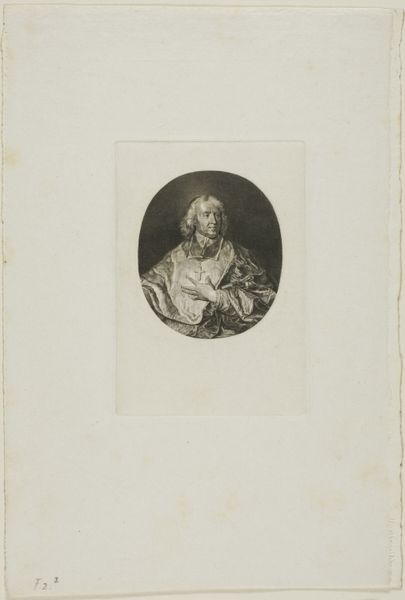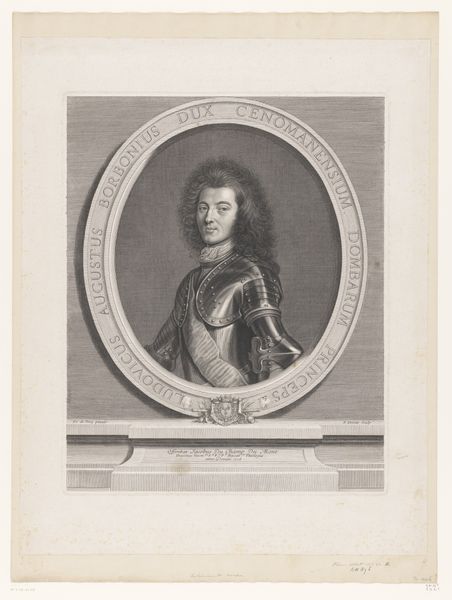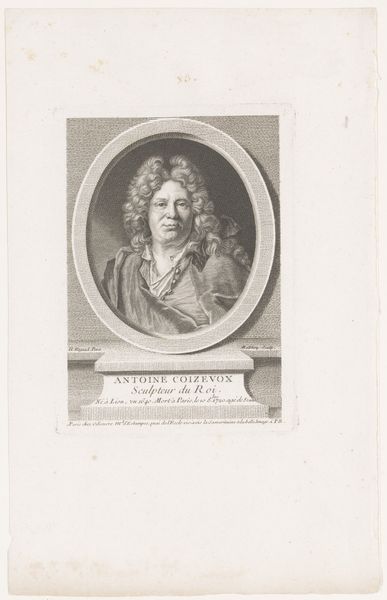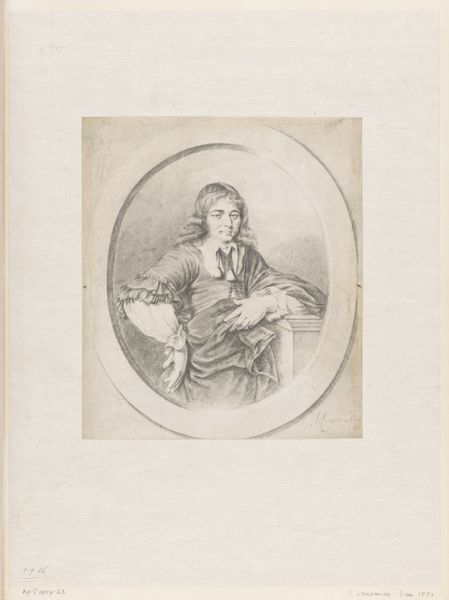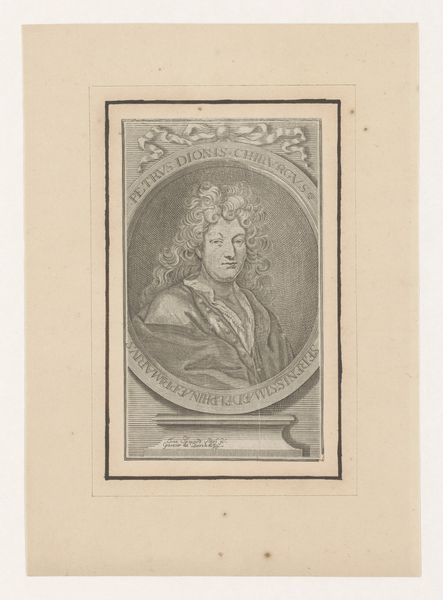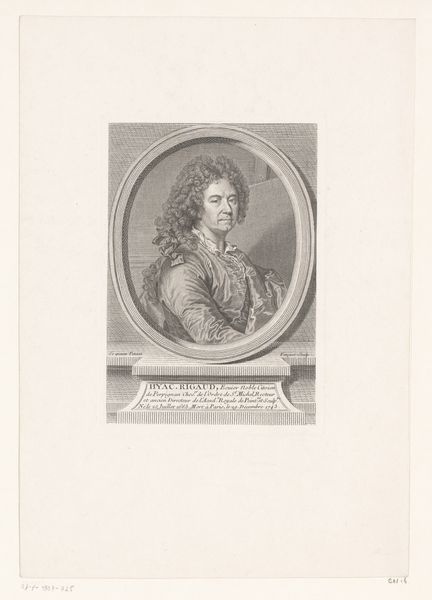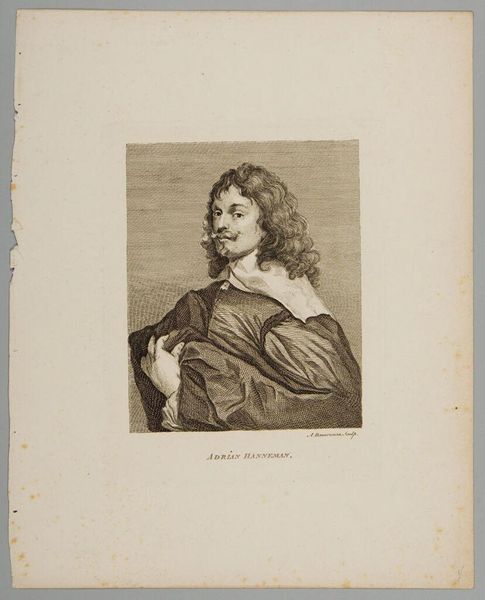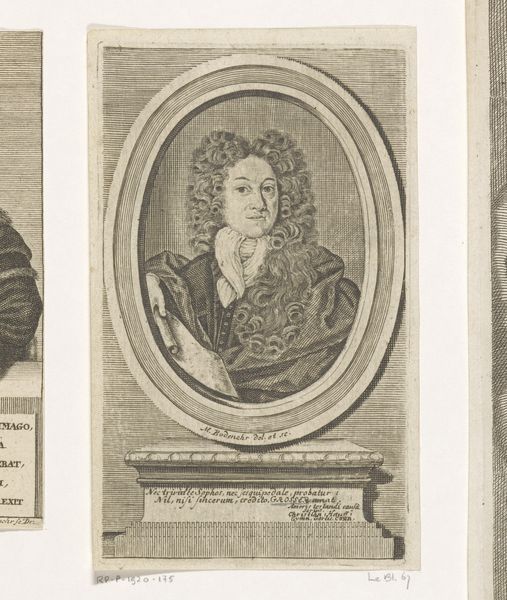
Portret van Richard Gibson en zijn vrouw, Anne Shepherd 1762 - 1789
0:00
0:00
print, engraving
#
portrait
# print
#
old engraving style
#
19th century
#
history-painting
#
engraving
Dimensions: height 170 mm, width 123 mm
Copyright: Rijks Museum: Open Domain
This is Alexander Bannerman’s undated print of Richard Gibson and his wife, Anne Shepherd, made using etching and engraving. Gibson was a famous court painter in the 17th century. Bannerman, working in 18th century Britain, was not only an artist, but an engraver who reproduced the work of other artists and a dealer in prints. This print testifies to the growth of a commercial art market in Britain. The print represents two portraits placed on a stone wall, reminiscent of old masters, yet the portraits themselves are small, cheap and reproducible. How does this choice reflect the tension of Bannerman’s time, caught between the tradition of art and the new commercial art market? Studying Bannerman’s business practices through archival research can help us to understand the social conditions that shape the production and consumption of art. It allows us to reflect on the meaning of art as something that is contingent on social and institutional context.
Comments
No comments
Be the first to comment and join the conversation on the ultimate creative platform.
